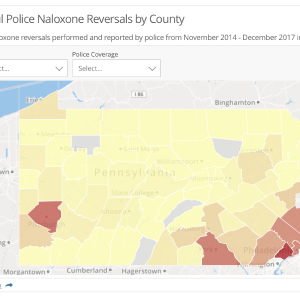Opioid Overdose Antidote Naloxone: Curse or Blessing?

It’s not difficult to pick up on the controversy swirling around the use of the opioid overdose antidote naloxone. This remedy for an overdose, often brand-named Narcan, is being used in thousands of communities across the nation to revive a person who has consumed too much heroin, oxycodone, hydrocodone, fentanyl or other opioid drug. Most of the time, it’s used in the form of a spray that’s sent up a person’s nostrils. In just seconds, a person who was previously on his (or her) way to death will open their eyes and wonder what happened.
But attitudes on how to deal with those who are addicted vary dramatically. Should we be saving these lives with this antidote? Or should we not bother? All you have to do to take the temperature of public opinion is visit the comments section of any news reports on the use of naloxone—if any website dares to allow comments. It’s more likely that they have been turned off to prevent the posting of blistering critiques and passionate emotions on both sides of this issue.
There are many questions being asked about the use of naloxone in the midst of this opioid crisis. Like these:
- Should naloxone be used to save the life of an addicted person?
- What about the person who overdoses multiple times in one day?
- Or the person who has OD’d and been brought back more than a dozen times?
- Is there a limit to this method of helping a person?
- What should happen after a person receives naloxone?
- Should he or she then be forced into rehab?
As we struggle with our epidemic of opioid abuse and overdoses, these are valid examinations we should make, and good questions to ask ourselves.
“Let Them Die!”

Most disturbing of all the responses we’ve seen are those from people who think those who overdose should just be allowed to die. On our Facebook page, in particular, we have encountered this reaction many times. We’ve received comments like “They’re just trying to kill themselves,” “They don’t deserve to live.”
When you see comments like this, you have to wonder what this person has been through. Were they horrifically betrayed or abused by an addicted person? Did they try to help a hundred times, only to fail and give up? Or does this kind of comment simply come from a person with a black heart?
But for every brutal response like this, there are so many comments coming from the opposite viewpoint. Even if they have suffered at the hands of one who is addicted, these people have not and will not give up on their loved one. They want the chance to help that person recover from addiction, even if it means using naloxone to save their loved one’s life, over and over again.
Mothers caring for sons, fathers caring about their daughters, children hoping their parents will one day recover from a crippling addiction—once you have truly loved someone, it’s hard to completely extinguish that love, even if it’s necessary to move oneself, children or the elderly out of the reach of harm.
And After Naloxone? What?
It’s obvious that naloxone is not a solution to addiction. It simply brings a person back from the brink of death. As noted by the National Council on Alcoholism and Drug Dependence, a person who has already overdosed and been revived is not out of the woods by any means. One study found that 10% of those revived died from their addiction within a year.
First responders like EMTs will normally take an overdose victim to the hospital to be checked out if they can. But many of the addicted are in such desperate condition that they can’t think any farther than the drugs they feel compelled to use. It’s common for a person who has been revived to run off rather than consent to any further care. When a person does arrive in the emergency department of a hospital, the staff will, to some degree or another, based on the hospital’s policies and their available time, make an effort to refer the person to rehab.

However, the ability of ER staff to truly help is limited. The Washington Post covered this subject in vivid detail in an article describing the inability of an ER doctor to offer an alcoholic patient any real help. You can read that article here. The problem with opioid addicts is very similar. If the person wants help and the staff actually have some time to discuss the person’s options or if a counselor is on call at the facility, then effective help might be possible.
States such as Arizona are working on improved guidelines to teach hospital staff how to get an overdose victim into a rehab program that can save his or her life. You can read a draft of these guidelines here.
The Bottom Line
The recently-released documentary Heroin(e) discusses the problem of keeping Huntington, West Virginia citizens alive despite the city having the highest overdose rate in the country. This documentary focuses, in part, on the activities of Fire Chief Jan Rader who distributes naloxone to the first responders in the fire department. In the documentary, she says, ”I don’t care if I have to save somebody 50 times. That’s 50 chances to get into long-term recovery.”
“I don’t care if I have to save somebody 50 times.
That’s 50 chances to get into long-term recovery.”
If a person will ever get into rehab or recovery, they must be kept alive. If they need a helping hand to stay alive, to have a chance to break out of their downward spiral, then so be it. We want to be able to see them arrive at our door so they can, day by day, begin to see a brighter day dawn. That’s been our job for the last fifty years and it will be our job until this problem has been defeated.
And sometimes the blessing of naloxone actually becomes visible, as happened in June 2017 in Florida. That was when Steve Sundquist returned to a firehouse in Boynton Beach to thank the first responders who had saved his life twice in one day. That was enough for this man to find a rehab program that would finish the job of saving his life—the job that was started with a dose of naloxone.


 ®
®